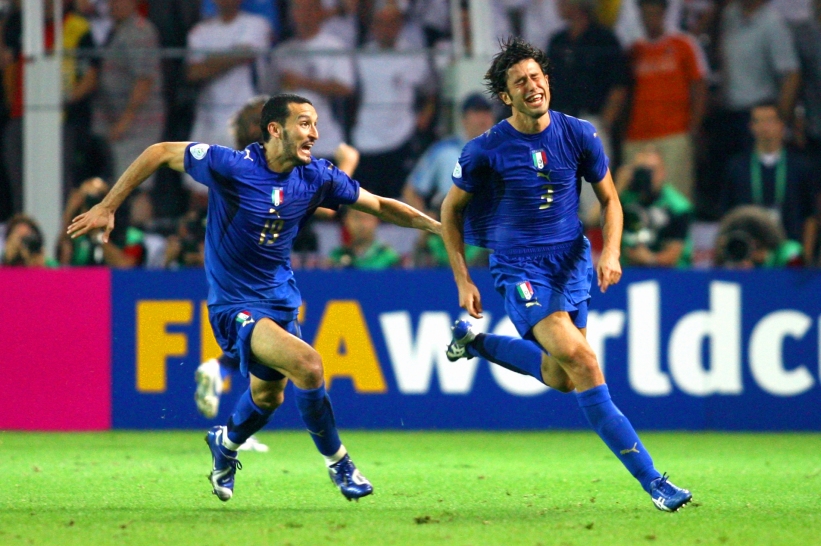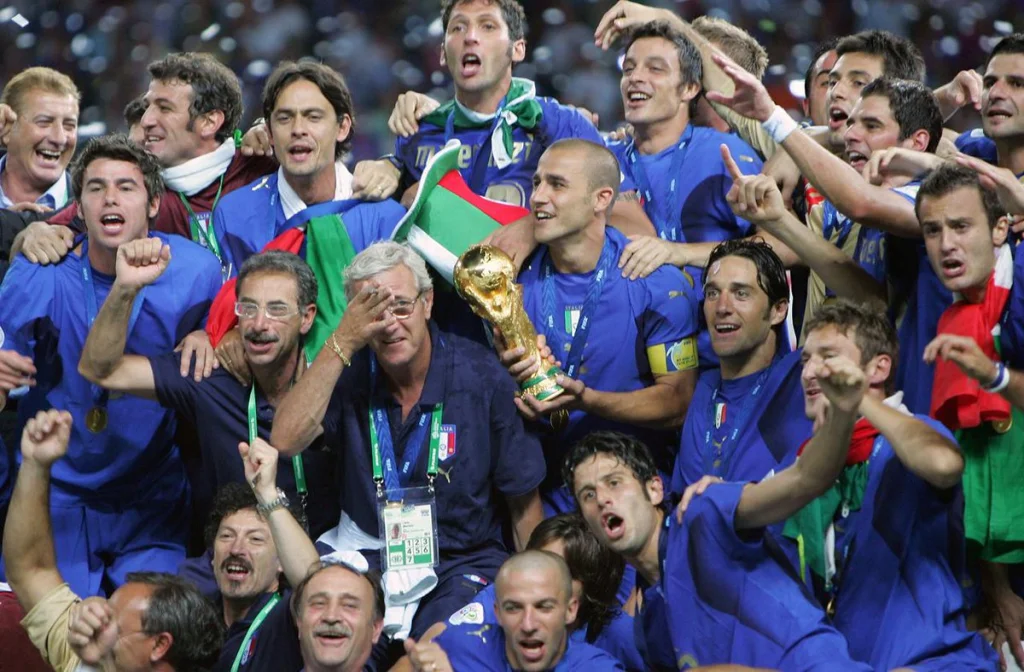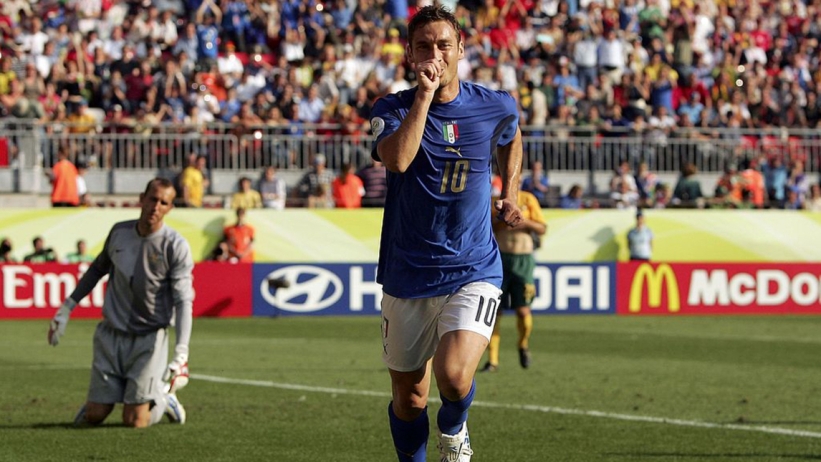As the final whistle went in Milan after the aggregate play-off defeat to Sweden, the fate of the Italian National team was sealed. The 2018 World Cup in Russia would be the first since 1958 without Italian representation.
Predictably, the failure saw a mixture of tired clichés and emotive photo journalism. Among the headlines, the World Cup without Italy was described in culinary terms as ‘a pizza without cheese’ and a ‘fine pasta without sauce’.
Another newspaper editorial declared the defeat the ‘Caporetto moment of Italian Football’ – the battle of Caporetto being a 1917 offensive still held as the greatest defeat in Italian military history. Meanwhile, La Gazzetta dello Sport went with “The End,” accompanied by a photograph of Gianluigi Buffon throwing his hands up in despair at the final whistle.
The men in blue were not alone in not qualifying for this summer. Netherlands, USA, Chile and Cameroon were other notable absentees. But the pain in Italy has been heartfelt, more so given their triumph 12 years ago.
In qualifying, Group G was seen as negotiable despite the presence of Spain, who were favourites to top the standings. Albania, Israel, Macedonia and Liechtenstein were all expected to be ‘easy meat,’ but many of the games were a struggle.
While the 0-3 loss to Spain in Madrid was pivotal, the 1-1 draw at home to Macedonia exposed an aging team who, even with the last dregs of experience from 2006, would struggle to qualify.
Looking back, qualification for Germany 2006 was equally cumbersome although ultimately successful. Group 5 comprised of Belarus, Italy, Moldova, Norway, Scotland and Slovenia. The Azzuri laboured to beat Slovenia, Belarus and the Norway at home and lost 0-1 to Slovenia in Celje. Meanwhile, they drew away to Norway and were also held in Scotland, where a 2nd half Grosso effort rescued a point.
With the spectre of football scandals looming over Serie A, the Italians were not seen as one of the favourites for the tournament despite an abundance of talent including Buffon, Totti, Del Piero and Pirlo.
Against such a backdrop, the tournament win was met with surprise across the globe (including in Italy) and sparked wild celebrations on the streets of Rome and beyond. In fact, it wasn’t until the 2-0 semi-final win over Germany that overall victory seemed achievable.
Failure to qualify in 2018 brought the curtain down on the careers of some of those 2006 heroes. But what about the others? Here, we look at what became of the men who defeated France on that famous night in Berlin.
Gianluigi Buffon
After an emotional 2017/18 season, Buffon retired but then returned to the national set-up. The veteran goalie admits to having feelings of ‘national team obligation’ and his last return was almost certainly prompted by the death of Fiorentina’s Davide Astori.
His experience and leadership may be unparalleled, but Buffons’ speed, agility and reflexes are far from his 2006 peak, and Russia 2018 marked his last chance of playing in a World Cup. After 176 caps, it appears his international career is over.
Come Euro 2020, Buffon will be 42 years old while Gianluigi Donnarumma, heir apparent to the famous grey jersey, will have gained another two years’ experience and will almost certainly be Italy’s first choice.
Gianluca Zambrotta
Como born right-back Zambrotta fell just short of reaching 100 caps (he ended on 98 appearances) but his telling runs down the flanks were a feature of the Italian side for a number of years. Decorated like many of the 2006 team by the Italian President’s office to the order of Ufficiale O.M.R.I, Zambrotta went on to play for the national team at Euro 2008 and was part of the squad at the 2010 World Cup in South Africa.
Since his playing career came to an end, he has featured as both a pundit on national TV and worked in football coaching. In 2007, he was named honorary president of his former club Como as part of their centenary celebrations.
He has also taken part in Italian reality TV shows, but his most recent role has been part of an all-Italian coaching line up at Chinese club Jiangsu Suning FC.
Fabio Cannavaro
Skipper of the national side in 2006, Cannavaro’s post-World Cup career took him to Spain, where he played for Real Madrid, and back to Juventus before ending his playing days in Dubai.
As a squad player during Italy’s trophy defence in 2010, Cannavaro was also an ITV pundit in South Africa offering insight into the Azzurri.
Since his career ended, Cannavaro has been involved in coaching, working in Dubai and more recently in China.
Marco Materazzi
A controversial character with a physical, hard-tackling presence, Materazzi was at the centre of everything during that final. He was on the receiving end of Zidane’s head butt, gave away the penalty from which Zidane netted and scored Italy’s goal.
After Germany, his international career continued through to Euro 2008 and at club level with Inter Milan until 2011. A spell as player/manager at Chennaiyin FC in India followed but he will be best remembered for the incident involving Zidane.
Fabio Grosso
Fabio Grosso made 48 appearances for the national team and scored the decisive first goal against Germany in the Dortmund semi-final. In the final against France, his role was equally as important as he scored the winning penalty in the shootout.
At the start of the 2013-14 season Grosso moved into coaching with the Juventus ‘Primavera’ youth football system. In 2017, he was named as the head coach of Bari.

Gol di Grosso: Italy, Germany and the night in Dortmund in 2006
Mauro Camoranesi
Tenacious, dynamic and hardworking, Camoranesi had a distinctive role in Germany. Gifted with excellent vision and dribbling skills, his defensive and offensive ability was valued as pivotal to the triumph.
Born in Argentina he once said: “I feel Argentine but I have defended the colours of Italy.” He played for the national team in Euro 2008 and in the 2010 World Cup qualifying campaign. At club level, he spent his later years playing with VFB Stuttgart in Germany, and Lanus and Racing Club in Argentina.
Gennaro Gattuso
Part of the good cop/bad cop midfield dynamic of the side, Gattuso’s talismanic partnership with Pirlo played a key role in the win. While his technical skills were lacking, his pace, strength, ball-winning abilities and work-rate complemented the creative playing skills of those around him.
Gattuso is now back in charge at AC Milan, the club he once captained. But his managerial career has also taken in the Swiss Super league with Sion and spells in charge of Palermo, Pisa and OFI Crete.
Andrea Pirlo
While there had been hope Pirlo may appear at Euro 2016, his international career halted in 2015 by which time he had amassed a total of 116 caps. A 10 year spell at Milan came to an end in 2011 and was followed by spells at Juventus and MLS side New York City.
Off the field, Pirlo become famous as a cultural icon, often seen in fashionable clothing with a wine glass in hand. He summarised his career in the autobiography Quindi Gioco, ‘I Think Therefore I Play.’ He has yet to break into football management.
Simone Perrota
Born in England, his place in local Tameside history was cemented thanks to the final win in Germany. A lesser regarded but equally important part of the national team dynamic, Perrota was noted for his energy and work rate.
After Germany, he was most known for his playing role at AS Roma where he lined up alongside fellow World Cup winners Totti and De Rossi. He announced his retirement in 2013.
Francesco Totti
The great figure of Roman football played his last game on the 28th May 2017, coming on as a substitute in Roma’s 3–2 home win against Genoa. He made over 786 appearances for the club scoring 307 goals.
A few months after his retirement, he became a director at the club and also works as an ambassador for UNICEF, UEFA and FIFA.
The penalty that salvaged a dream: Francesco Totti vs. Australia (2006)
Luca Toni
Toni was playing for Fiorentina in 2006 but his post-World Cup career took him to Bayern Munich, Roma, Genoa, Juventus, Al Nasr, Fiorentina and Verona.
At the end of the 2015-2016 season, Toni retired from football and the FIGC paid tribute to his role in 2006 in a ceremony before a friendly match between Italy and Finland in Verona. He was presented with a commemorative Italy shirt by FIGC President Carlo Tavecchio and honoured by the city of Hellas Verona for his goal scoring role at the club.
Daniele De Rossi
At the age of 22, Daniele De Rossi was the youngest member of Italy’s World Cup squad. He came on in the 61st minute of the final as a substitute for Totti and scored Italy’s third penalty.
He retired after the play-off defeat to Sweden but remains a force in the AS Roma midfield. He scored a crucial penalty in the club’s remarkable Champions League win over Barcelona in 2018.
Vincenzo Iaquinta
A fast, strong and opportunistic striker, Vincenzo Iaquinta excelled in the air, and inside the penalty area thanks to his attacking runs.
A substitute in the 2006 final, he suffered numerous injuries after the tournament. He left Udinese for Juventus in 2007 before ending his career with a loan spell with Cesena as his contract wound down. Now a qualified coach, he is expected to resume his football career soon by entering the technical area.
Alessandro Del Piero
One of the most technically gifted forwards of the modern era, Del Piero continued playing long after 2006. He is also recognised as one of the game’s greatest free kick specialists.
His 19-year spell at Juventus ended in 2012 when he made the surprise switch to Australian side Sydney FC. A spell at Delhi Dynamo in the Indian Premier League followed before his retirement in 2014.
Del Piero has since been involved in charity work in his native Italy and overseas. He has appeared on Sky Sport Italia as a pundit and was involved in the popular Netflix document series First Team: Juventus.


